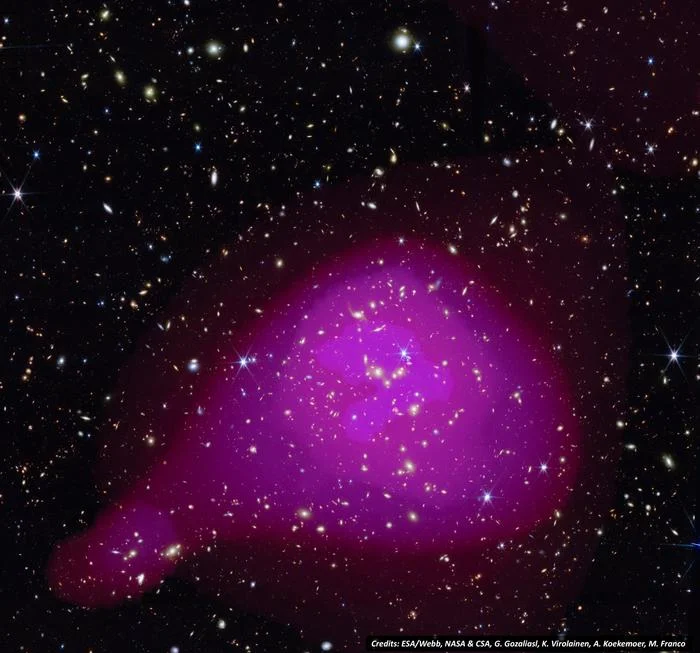
James Webb Telescope Unveils Deepest Image of Early Galaxies: A Cosmic Mystery Unfolds
The James Webb Space Telescope (JWST) continues to revolutionize our understanding of the universe, this time by unveiling the “largest and deepest” sample of galaxies ever detected. This unprecedented dataset, gathered from the COSMOS Web region, is providing astronomers with a large-scale view of galaxy evolution across cosmic time, but also unveils new mysteries along the way.
The new images, capturing light that took between one and twelve billion years to reach Earth, reveal approximately 1,700 galaxy groups. One standout, over 6 billion light-years away, has even been featured as the European Space Agency’s picture of the month. Ghassem Gozaliasl of Aalto University, who led the study, emphasized, “We’re able to actually observe some of the first galaxies formed in the universe.”

Since its activation in 2022, the JWST has drastically enhanced our ability to peer into the cosmos with unparalleled resolution and sensitivity. This allows astronomers to observe galaxies that are a billion times dimmer than what the human eye can detect, providing a glimpse into the universe’s distant past.
The observed galaxy groups and clusters, consisting of hot gas, dark matter, and galaxies with supermassive black holes, create a dynamic environment. "The complex interactions between these components play a crucial role in shaping the life cycles of galaxies and driving the evolution of the groups and clusters themselves,” Gozaliasl explained.
One crucial finding is that galaxies cluster in dense regions along the cosmic web. As Gozaliasl poetically puts it, “Like humans, galaxies come together and make families... Studying these environments also helps us understand the role of dark matter, feedback from supermassive black holes, and the thermal history of the hot gas that fills the space between galaxies.”
However, the JWST is not just confirming existing models; it's also uncovering unexpected phenomena. One such mystery involves “Little Red Dot” (LRD) galaxies – small, red galaxies formed about 600 million years after the Big Bang. These galaxies appear unusually bright and massive, suggesting they formed far more rapidly than current models predict.
Further complicating matters, while these LRDs show signatures of active galactic nuclei (AGN) fueled by supermassive black holes, they strangely emit no X-rays – a hallmark of AGN. As a result, a new research paper has determined that super-Eddington accretion models are also ruled out for LRDs due to these galaxies' extreme X-ray weakness. If the light isn't explained by AGN, then the initial challenge remains: how were these early galaxies swollen with stars so early in the universe’s history?


Despite the challenges, the JWST's findings provide invaluable data for understanding galactic evolution. Researchers from around the world are now analyzing the data to address fundamental questions about the universe and the formation of its earliest galaxies.
The James Webb Space Telescope continues to push the boundaries of our cosmic knowledge. While it answers some questions, it simultaneously presents new puzzles, deepening the mystery surrounding the early universe. What do you think is the explanation for the unusual characteristics of these early galaxies? Share your thoughts and theories in the comments below!